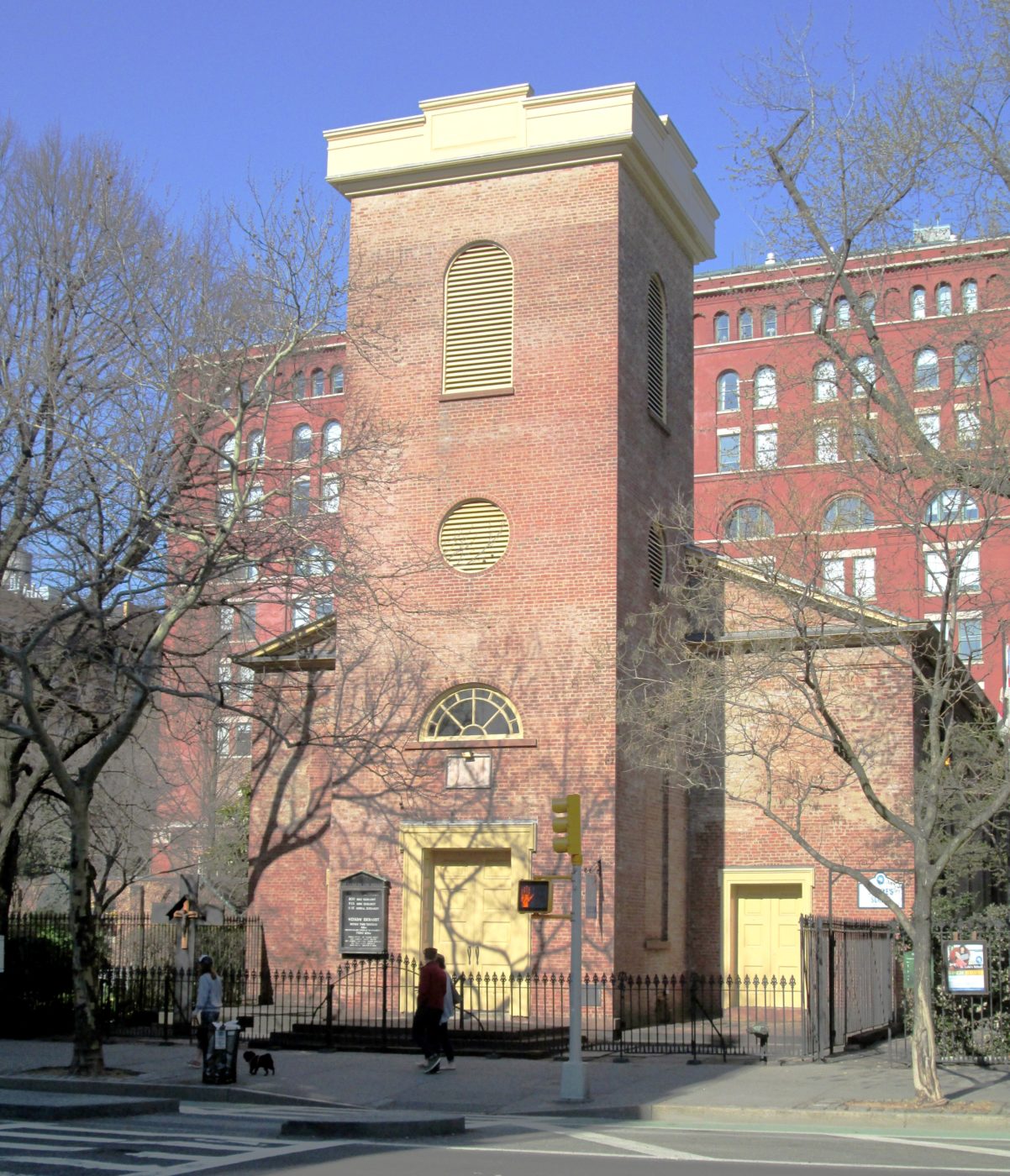Greenwich Village’s Oldest Church — Originally “in the field”
On October 22, 1820, a group of Greenwich Village residents gathered at the home of Catherine Ritter to found a new Episcopal Church. Two hundred years later, the church they formed together still stands at 479-485 Hudson Street. Over the course of its lengthy history, the Church of St. Luke’s in the Fields has weathered two devastating fires and three epidemics, demonstrating incredible resilience in every crisis. As the third oldest church building still in use in Manhattan, and the oldest in the Greenwich Village Historic District, its history is a uniquely continuous reflection of the surrounding neighborhood’s evolution over time.

In the late eighteenth and early nineteenth centuries, New Yorkers living in downtown Manhattan faced the arrival of a yellow fever epidemic. In an attempt to flee this series of outbreaks, people began to move uptown. What we now know as Greenwich Village was, until this time, a largely undeveloped piece of land dotted with farms and summer estates primarily owned by the city’s aristocratic class. As new communities started arriving in the area, they brought old institutions with them and created new ones. St. Luke’s in the Fields was originally commissioned as the uptown chapel of Trinity Parish, on land owned by the church, with its cornerstone laid in 1821. It was consecrated on Ascension Day, May 16, 1822. Reverend George Upfield served as the congregation’s first minister, and fascinatingly, one of its founding wardens included theology professor Clement Clarke Moore, who wrote “Twas the Night Before Christmas.”

The name “St. Luke’s” was chosen in honor of the patron saint of physicians, an evocation of the disease that catalyzed the church’s development. According to Daytonian in Manhattan, only four buildings were visible from the site of the church at the time of its construction, including the State Prison between Christopher and Charles Streets. This idyllic rural context apparently gave St. Luke’s the second part of its name: “In the Fields.” Built by James N. Wells, the structure’s simple Federal-style architecture also recalls this transitional period in Greenwich Village. Simply massed and adorned, St. Luke’s was intended to be a “country” church surrounded by farmland, even as it was a critical part of the neighborhood’s changing landscape.
Over the next centuries, St. Luke’s was a focal point in the development and redevelopment of this city block, which was also originally coordinated by James N. Wells. Within a few years of the church’s erection, houses were constructed along the sides of the church to cover its burial ground and garden. Of the seven houses which once flanked the church on each side, a total of six remain. One of these, No. 487 Hudson Street, was the home of Wells himself. Much later, the gymnasium facing Greenwich Street was built in 1926, and the St. Luke’s School next door was erected in 1955, replacing a row of early nineteenth century structures. The church has undergone multiple architectural iterations as well, surviving a fire in 1886, and again on March 6, 1981. The latter was extremely destructive, and it took four years of fundraising and rebuilding until St. Luke’s was reconsecrated in 1985.

Beyond its connection to the early stages of modern Greenwich Village, St. Luke’s has made history in a number of ways throughout its lifetime. According to its website, the church became the first in the city to offer daily services of Morning and Evening Prayer and a weekly Sunday Eucharist, and by 1845 was leading proponent of Anglo-Catholic worship in the United States. Then in 1979, it was one of the first churches in the Anglican Communion to appoint a woman as assistant priest. St. Luke’s hosts one of the oldest Alcoholics Anonymous (AA) meetings in the city, and has been a stronghold for the city’s LGBTQ community, developing a number of programs that have provided critical support and opportunities for gathering.
In the 1980s, the congregation of St. Luke’s was significantly affected by the HIV/AIDS pandemic, and in response, the church founded the AIDS project of St. Luke’s. This groundbreaking project has served Saturday dinners and weekend teas to 35,000 people. Additionally, St. Luke’s began hosting a Gay Pride evensong celebration, and participating in the annual NYC Pride Parade. The church’s sanctuary was also the setting of a memorial service in the 1989 movie Longtime Companion, which tells the story of a group of friends confronting the emergence of AIDS in their community.

SAGE, the country’s largest and oldest organization dedicated to improving the lives of LGBT older adults, also began in a small office at St. Luke’s. In its first years, SAGE established a number of initiatives that have become fundamental to the organization’s current operations. These included a drop in center, support groups, the nation’s first municipally funded caregiver respite program for LGBT caregivers, and the nation’s first Friendly Visitor program for LGBT older adults.
Beginning in 1994 under the leadership of Reverend Dr. Roger A. Ferlo, the congregation of St. Luke’s established the Go St. Luke’s tutoring program for children. St. Luke’s expanded and deepened its youth outreach in 2001, when it began welcoming LGBTQ young people, especially those experiencing homelessness, to its church on Saturdays for “Art and Acceptance.” The parish prides itself on its welcoming atmosphere, opening its two acre garden to the public, and regularly sharing its indoor space with local groups and organizations.
Without a doubt, the rich and dynamic history of St. Luke’s In the Fields is a valuable and captivating reflection of the history of Greenwich Village at large. Greenwich Village would not be what it is without this landmark church and its congregation, which shaped the surrounding physical and social environment, sustained the neighborhood through tremendous hardships, and maintained essential community support programs.
